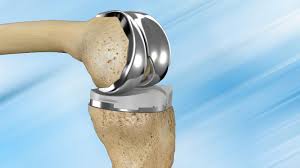Total Knee Replacement Surgery
What is Knee Osteoarthritis?
The knee is one of the joints most susceptible to osteoarthritis. Let's explore why, how to recognize the symptoms, and how to address them.
Osteoarthritis is the most common rheumatic disease and a leading cause of disability. While more prevalent in older adults, it's not exclusive to them. It's a degenerative form of rheumatism affecting any joint, but most commonly the spine, hip, and knee.
When climbing stairs, walking, rising from a seated position, entering and exiting a car (or bath) becomes difficult, gonarthrosis, a degenerative rheumatic disease affecting the knee joint, may be the cause. The knee is one of the largest and most complex joints in the human body, strong enough to support body weight yet mobile enough for walking and running.
Unlike inflammatory rheumatic diseases (like rheumatoid arthritis), osteoarthritis is degenerative, characterized by the progressive deterioration of articular cartilage. As cartilage thins and fragments, natural joint movement is hindered, leading to pain and reduced mobility. Over time, all joint components are affected.
Why Surgery?
Due to its degenerative nature, gonarthrosis or knee osteoarthritis is almost impossible to resolve with conservative methods (like physiotherapy and anti-inflammatory drugs), though these can alleviate symptoms and delay surgery.
In symptomatic cases unresponsive to conservative therapies, knee replacement surgery is the only treatment restoring satisfactory joint function. Performed by an experienced orthopedic surgeon in a center of excellence, it has a high success rate.
Accurate diagnosis is crucial to guide the specialist toward the best strategy for each patient, determining the appropriate prosthesis type and timing of the procedure.
A physical examination during the consultation allows the orthopedic specialist to formulate hypotheses, confirmed by X-rays, potentially supplemented by MRI to assess soft tissue (tendons, ligaments, menisci, etc.).
X-rays, and MRI for partial prostheses, inform the choice of prosthesis to replace the damaged joint.
What is a Total Knee Replacement?
Total knee replacement replaces damaged cartilage surfaces and a small amount of underlying bone at the ends of the femur and tibia with metal components. These are usually cemented to the bone. A durable plastic insert fits between the metal parts, creating a smooth surface. The underside of the kneecap is often resurfaced with a cemented plastic button. Some surgeons may not replace the kneecap, opting for a case-by-case approach; there's no scientific evidence favoring either method, so the decision depends on surgeon experience.
Post-operative Rehabilitation and Resumption of Activities
Rehabilitation starts immediately post-surgery, preventing stiffness. Physical therapy reduces swelling, improves circulation, and strengthens leg muscles.
Most patients begin exercises the day after surgery. A physiotherapist teaches exercises to strengthen the leg and restore knee movement, enabling a quicker return to normal daily activities.
GET A QUOTE
Need more information?
Your health, our priority.
Request your free quote
What are the Risks and Complications?
The complication rate after total knee arthroplasty is low. Serious complications, like knee infection, occur in less than 2% of patients. Major medical complications (heart attacks, strokes) are also uncommon. Pre-existing conditions (diabetes) increase risk.
Possible complications include:
- Infection at the wound or around the prosthesis. Blood clots (thrombosis) in leg veins are the most common complication;
- Implant problems: Implanted surfaces can wear, components may loosen or shift;
- Persistent pain: A small number experience persistent pain, sometimes with an unclear cause. This is rare;
- Neurovascular lesions: Nerve or blood vessel damage near the knee is rare, but possible during surgery;
- Metal component allergies;
What are the Expected Results of Your Surgery?
A goal of knee arthroplasty is improved movement, though full restoration is rare. Most patients can straighten their knee almost completely and bend it enough for stair climbing and car entry/exit.
Some numbness around the wound is common, as is stiffness, especially when bending.
Most feel metal-on-plastic clicking when bending or walking. This often diminishes over time and is usually tolerable compared to pre-surgery pain and limitations.
